Servicios Personalizados
Revista
Articulo
Indicadores
-
 Citado por SciELO
Citado por SciELO
Links relacionados
-
 Similares en
SciELO
Similares en
SciELO
Compartir
Cuadernos del Centro de Estudios en Diseño y Comunicación. Ensayos
versión On-line ISSN 1853-3523
Cuad. Cent. Estud. Diseñ. Comun., Ensayos no.53 Ciudad Autónoma de Buenos Aires jul. 2015
INTERPRETANDO EL PENSAMIENTO DE DISEÑO DEL SIGLO XXI
Upstream / Downstream
Robert Kirkbride *
(*) Associate DEAN; School of Constructed Environments (SCE), Parsons The New School for Design.
Fecha de recepción: julio 2014
Fecha de aceptación: marzo 2015
Versión final: julio 2015
Summary
In my article for Cuaderno 48, “Veils and Velocities,” I explored relationships between decorum and identity, their relation to the human predicament of “standing out” and “fitting in,” and the capacity for ornament to convey stories across time and fuel the imagination. Plentiful or spare, ornament equips the mind to interpret narratives, cultural and personal, and close readings of our constructed environments help tune new works to contemporary and future concerns. For the current issue, I sharpen focus on a subplot introduced in “Veils and Velocities,” where I note: “while sustainable improvements often focus on downstream byproducts of production, close readings can be performed upstream in the manufacturing sequence, enhancing the wellbeing of fabricators and the poetics of a product” (Kirkbride, 2013, p. 185). This paper considers several scales and modes of upstreaming, from the tectonics of a watershed and site management, to the awareness of history and one’s own position in it, and the reconceptualization of a product by the flows of its supply chain and lifecycle. I’ll retrace the origins of this notion –a walk upstream through a troubled watershed during a torrential rainstorm– and follow its influences on several object lessons and project-based exercises at Parsons The New School for Design.
Keywords: Architecture; Product design; Infrastructure; Supply chain; Upstream; Upstreaming; Watershed; Watertables.
Resumen
En mi artículo para el Cuaderno 48, Velos y veladuras, exploramos las relaciones entre decoración e identidad, su relación con la condición humana de “poner un pie afuera” y “encajar”, y la capacidad del ornamento de transmitir historias a través del tiempo y alimentar la imaginación. Abundante o escaso, el ornamento permite a la mente interpretar la narrativa, cultural y personal, y la lectura atenta de nuestros entornos ayuda a sintonizar las nuevas obras construidas con las preocupaciones contemporáneas y futuras. Para este artículo, focalizo en un argumento secundario introducido en Velos y veladuras, donde explico que: “mientras que las mejoras sostenibles a menudo se centran en productos intermedios derivados de la producción, las lecturas cercanas se pueden realizar en sentido ascendente en la secuencia de fabricación, mejorando el bienestar de los fabricantes y la poética de un producto” (Kirkbride, 2013, p. 185). Este trabajo considera varias escalas y modos de actividades previas, a partir de la tectónica de las cuencas hidrográficas y la gestión del sitio, a la conciencia de la historia y de la posición propia de uno en ella, y la reconceptualización de un producto por los flujos de su cadena de suministro y el ciclo de vida. Voy a recorrer los orígenes de esta idea –un paseo río arriba a través de una cuenca con problemas durante una lluvia torrencial– y sigo sus influencias en varias lecciones prácticas y ejercicios basados en proyectos desarrollados en Parsons The New School for Design.
Palabras clave: Arquitectura; Diseño de producto; Infraestructura; Cadena de suministro; Aguas arriba; Cuencas hidrográficas; Capas freáticas.
Resumo
No meu artigo para o Caderno 48, Velos y veladuras se exploraram as relações entre decoração e identidade, sua relação com a condição humana de “por um pé fora” e “encaixar”, e a capacidade do ornamento de transmitir histórias através do tempo e alimentar a imaginação. Abundante ou escasso, o ornamento permite à mente interpretar a narrativa, cultural e pessoal, e a leitura atenta de nossos ambientes ajuda a sintonizar as novas obras construídas com as preocupações contemporâneas e futuras. Para este artigo, se focaliza num argumento secundário introduzido em Velos y veladuras, onde se explica que “enquanto melhorias sustentáveis muitas vezes se concentram produtos intermédios derivados da produção, leituras pertas podem ser feitas em sentido ascendente na seqüência de fabricação, melhorando o bem-estar dos fabricantes e a poética de um produto” (Kirkbride, 2013, p. 185). Este trabalho considera várias escalas e modos de atividades prévias, a partir da tectônica das bacias hidrográficas e a gestão do sítio, à consciência da história e da posição própria de um nela, e a re-conceitualizacão de um produto por os fluxos de sua correia de abastecimentos e o ciclo de vida. Percorrer-se-á as origens desta idéia –um passeio rio acima através de uma bacia com problemas durante uma chuva torrencial– seguindo suas influencias em várias aulas práticas e exercícios baseados em projetos desenvolvidos em Parsons The New School for Design.
Palavras chave: Arquitetura; Design de produto; Infra-estrutura; Correia de abastecimento; Águas acima; Bacias hidrográficas; Lençóis freáticos.
Upstreaming and watersheds
In Fall 2003, a series of severe rainstorms wrought havoc on the watershed of East Brandywine Creek, in Chester County, Pennsylvania, where I was designing a low-impact land planning project on a beautiful but challenging site intersected by water bodies and transcontinental gas pipelines. As detailed elsewhere (Kirkbride, 2009) the confluence of this extreme weather with human hubris threatened private and public infrastructures and potable water for thousands of downstream residents. An historical accumulation of inadequate site management techniques in upstream residential developments, combined with unrestricted clearcutting in an upstream forest, had caused severe erosion to banks and lowered the streambed precipitously, risking environment devastation by exposing natural gas pipelines to possible rupture. Despite empirical evidence supplied by local residents, local authorities claimed that the recently built stormwater and erosion control features had been implemented according to approved standards, avoiding the question of whether or not the features were effective.
During one of these storms, as local residents struggled to once again protect their properties, I walked upstream and documented a series of failures among the “controls” that were in fact exacerbating erosion and damage downstream (See Figures 1-3 at page 217). I submitted this material to the Township Manager, who was confronted with the sobering fact that the watershed mechanics were broken. In response to this and the redoubled efforts of neighboring property owners –later dubbed the “Brandywine Five” by a United States Federal Judge (Elefant, 2010)– local authorities gradually shifted positions to address the insidious effects of decades of poor watershed infrastructure planning. In the short term, this hands-on experience informed commonsense erosion mitigation techniques I specified for the landplanning project. Utilizing low impact products (filter socks) and stormwater control features (raingardens, cross vanes), along with best management practices of preserving trees and undergrowth by minimized site regrading, I developed a land plan that was approved by all local, county, state and federal agencies. Over time, this experience has yielded a valuable model for reconsidering the design process and finding new ways to bring the public realm into the classroom. While it is fundamentally ideal to reduce one’s own waste and downstream impacts –as a person, business entity, village or city– how much more pragmatic and effective might it be to look upstream and support communities above us in the watershed, whose byproducts and waste flow to us? Potentially, upstreaming is a mindchange capable of translating natural self-interest into empathy and mutual benefit.
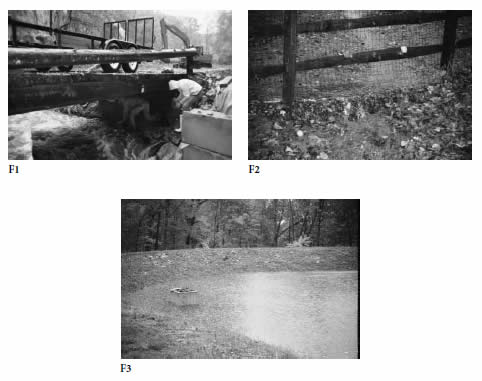
Figures 1-3. To understand an unhealthy watershed, the erosion of stream and river banks, the intensifying threat to private and public infrastructures, and the contamination of potable water, cherchez l’eau. In other words, look upstream. While hired contractors shored up bridge foundations, a few hundred yards upstream a designed swale is rendered useless by a property owner with a small dog, whose wire mesh fencing clogs with unraked leaves, redirecting water from the intended detention basin directly into the foundations of a nearby home. In turn, that detention basin’s outlet is clogged by uncleared debris, and the water percolates through the soil more quickly than it is released to the stream in Figure 1, conveying even more water to homes below, eroding their foundations. In brief, trees tend to be better hydraulic engineers than humans, since their lives depend on keeping water and humidity in close proximity. Photos by R. Kirkbride.
Upstreaming and history
If a close reading of the East Brandywine watershed revealed the impacts of deleterious habits of land development, due to reliance on intensive infrastructures and overconfidence in design standards divorced from local conditions, how might such practices inform pedagogy? How might awareness of real-world historic precedents impact learning, especially when design students of all stripes –architecture, product design, fashion– are often predisposed to demonstrate how their work stands out from others’? In contrast to the hard and social sciences, where researchers are obliged to evidence where and how they stand on the shoulders of predecessors, students in design fields are frequently allergic to history under the suspicion that it will taint their uniqueness and cramp their style. Preoccupation with originality is endemic to the process of evolving one’s identity in a culture and marketplace saturated by competitive branding. While understandable, such logic is tenuous, especially when a broader view reveals that the seemingly fickle spasms of the marketplace follow the gestures of crochet, going forward by going backward. The present rapaciously re-appropriates the past to imagine our desires for the future; or, as Louis I. Kahn famously noted, “what will be has always been”. (Wurman, 1986, cover)
Close readings of artifacts and contexts (places, peoples) transport us upstream in time, “cultivating empathy for others five hundred years removed [to discover] stark differences and haunting similarities [that] promote empathy with others in the present, five hundred or five thousand kilometers away” (Kirkbride, 2013, p. 182). For designers, awareness of historic precedents and one’s own position with respect to them inculcates a sensibility tuned not only to the what of our efforts, but to the why. Pedagogically speaking, then, how?
Upstreaming and communities
Object Lesson: Little Houses on the Black River (2006)
Close on the heels of the project in the East Brandywine watershed, in a collaboration among students and faculty from Parsons The New School for Design, Konstfack University College of Arts, Craft and Design, and St. Etienne School of Art and Design, Little Houses on the Black River (See Figures 4-6 at page 219) was developed across the 2005- 06 academic year to explore potentials of sustainable shelter in a riverside community. In need of temporary housing for designers, scholars and other visitors to support its agenda to revitalize the rural town of Hällefors, Sweden, as a destination for the study of design and culinary arts, the Formens Hus (House of Design), sponsored Parsons’s proposal to design and construct seasonal dwellings on a former industrial railway bridge over the Black River. The site embodied the town’s industrial heritage, inviting imaginative reuse: the existing bridge and its rails provided a ready-made foundation for the new dwellings, minimizing ecological disturbance at the water’s edge. Extending the House of Design’s vision of educating through design, the project offered a project-based learning experience for participants, with the aim of engaging local residents in its fabrication, use and life cycle. The program was simple yet ambitious: produce two self-sustaining artist-in-residence dwellings and home provisions for a site that is off the beaten track. Drawing inspiration from Swedish garden-cabins (friggebod), small multi-use structures of approximately 15 m2, the teams from Parsons and St. Etienne each developed one moveable sleeping/ resting car, while Konstfack students devised provisions to equip inhabitants for their stay. The Parsons dwelling was designed as a flat-packing kit-of-parts, ideally to be palletized and retailed, and potentially deployed by rail in circumstances of natural/manmade disasters. Prior to its construction on site, the Parsons unit was installed at the May 2006 International Contemporary Furniture Fair (ICFF) in New York City, where it received the Editors’ Choice Award for best design school entry. Two weeks later, students and faculty from Parsons and St. Etienne gathered in Sweden, where we constructed and installed the two dwellings with additional support from IKEA and local manufacturers. A third structure, the “wet unit,” was ultimately designed by me and constructed on site with students and faculty (Ho, 2007, p. 181), providing future residents with a shared kitchen, shower and waterless toilet produced by the local manufacturer, Danfö. The three structures and their supporting deck, built on the existing rails, were installed in ten days. As such, the project explored a zone between architecture and product design, connecting a universalized product with unique contexts of site and cultural memory.
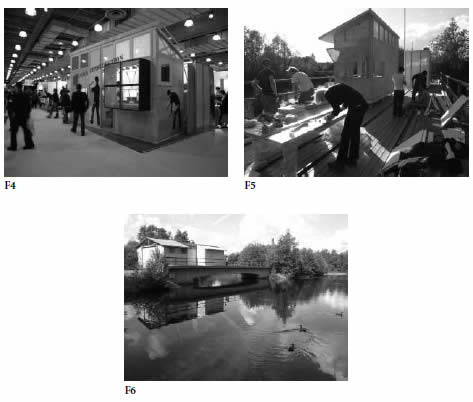
Figures 4-6. Little Houses on the Black River at ICFF 2006, during installation, and completed. Parsons students included Nara Almeida, Veronica Choi, Kimberly Fischer, Mauricio Gomez, Nicolas Guzman, Jeon Mi Hong, Carissa Lo, Sara Musselman, Ethan Tseng, Joseph Whang, and Alexander Yoo. Primary faculty included Keith Doyle, Robert Kirkbride, and Stefanie Kubanek, with support from William Newhouse. The project was conceived and produced by Product Design Chair, Tony Whitfield and Formens Hus Manager, Lars Wieselgren. Photos by R. Kirkbride.
Or at least that was the ambition. Aside from logistical challenges –project blogs and skype were not yet familiar to all participants– the outreach to local residents was not as comprehensive as we’d imagined. Despite several preparatory trips by faculty and students, and planning meetings with the House of Design and local authorities, it became apparent during construction that the new dwellings inhibited everyday use of the bridge for fishing and foot traffic by residents who had little or no awareness of our project or its noble aspirations. Although the award-winning project generated a great deal of positive editorial coverage (appearing in two books and six design magazines), and provided an excellent learning experience for the students and faculty involved, the assumption that the House of Design offered a de facto voice for townspeople was flawed. With time the buildings were vandalized and sober reflection must acknowledge the shortcomings in the breadth of our communal engagement, emphasizing the importance of direct user engagement upstream of design development.
Object Lesson: Margaretville, NY (2007)
Fresh from the lessons of the Little Houses project, Parsons faculty and students worked more closely with residents in a subsequent endeavor closer to home, in Margaretville, New York, in the Catskill/Delaware Watershed (See Figure 7 at page 221). Like many other small towns upstream of New York City, residents struggle to maintain their footing, economically and environmentally, as the increasing frequency of flooding has repeatedly devastated town centers. From 2006-07, direct engagement with elected officials, citizens, and local non-profit organizations informed a Product Design junior studio on improving the local marketplace, several thesis projects on public infrastructures, and the Parsons Design Workshop, which focused on rebuilding a community pavilion that had fallen into disrepair. For this last project, led by Parsons Professors David Lewis, Terry Erickson, Harriet Markis and Joel Stoehr, a team of eleven Master of Architecture graduate students “spent the spring semester meeting with community residents and public officials to develop a series of schemes that were then brought together into the final design. Over the summer, the students worked from dawn to dusk, six to seven days a week, to construct the pavilion” (Parsons Design Workshop, 2007). In August 2011, the community pavilion withstood record flooding caused by Hurricane Irene, which decimated the downtown area yet again.
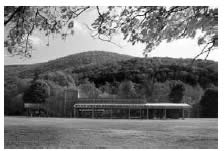
Figure 7. Community Pavilion, Margaretville, NY. Photo by Michael Moran.
Object Lesson: Challenging Eminent Domain in Downingtown, PA (2009)
Returning briefly to the East Brandywine watershed. At the conclusion of the aforementioned article (Kirkbride, 2013) I noted the intent of a natural gas company, Williams-Transco, to use eminent domain to expand its pipeline easement on a fragile site by removing 1,500 trees and performing an open-cut in the East Brandywine Creek. Five contiguous property owners banded together and challenged the eminent domain process in court, at their own expense, with the legal counsel of Carolyn Elefant (Elefant, 2010; Triolanus, 2011). Included among the submitted evidence were photo-diagrams I’d prepared to demonstrate the faulty logic of the Williams-Transco proposal. In Figures 8 and 9 (See Figures 8-9 at page 221), the four solid lines represent existing high-pressure natural gas pipelines and a fiber optic bundle. The dashed line accurately represents the flood line of the East Brandywine Creek, precisely where Williams-Transco planned to locate their soil stockpiles during their proposed open cut across the Creek. Empirical evidence shows that such flooding is not uncommon for this specific site, and since the site is located less than a half mile from a drinking water intake downstream, the location of the stockpiles in this location would likely result in a public health hazard. Against expectations, the United States District Court in Philadelphia ruled in favor of the “Brandywine Five,” and Williams-Transco abandoned the eminent domain proceedings, a rare occurrence. Fortunately, the “Brandywine Five” were not alone in their concern for the watershed. A mile or so downstream, the Victory Brewing Company, which had recently produced an award-winning Pilsner, contributed its voice to the stance against the eminent domain proceedings. After all, the proposed open cut of the Creek would contaminate their primary ingredient, water. As the company’s website states, “the brewery was purposefully opened less than 14 miles from the pristine headwaters of the Brandywine Creek”. In recognition of the significance of looking upstream, the brewery created a new beer, Headwaters Pale Ale and a financial incentive for watershed protection: “Because of the important role water plays in the production of quality beer, Victory Brewing Company initiated The Headwaters Grant as a way to give back to the groups working hard to protect the natural resource”. (Victory Brewing Company Website, 2014)
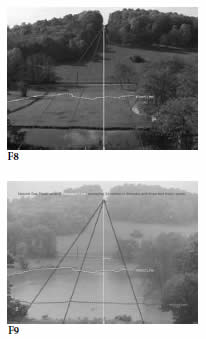
Figures 8, 9. Photodiagrams of East Brandywine Creek flooding patterns, by R. Kirkbride.
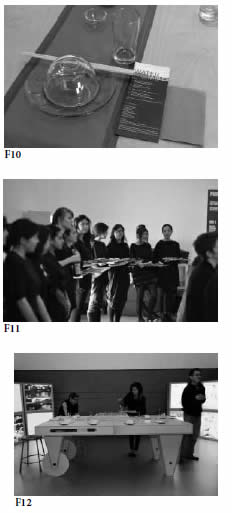
Figures 10-11-12. Two Watertables dinners produced by Parsons Product Design. Photos by Martin Seck (10, 12), Philip Wei Huang (11).
Object Lesson: Watertables dinners, hosted by Parsons Product Design (2009, 2010)
Drawing from these experiences, I’ve produced several project-based learning events that link curricular and extracurricular activities to help students absorb the complexity and political implications behind processes of design and making. From 2009 to 2010, I produced two separate WATERTABLES dinner events and three 24-hour design SLAMs to promote learning transactions and serendipitous encounters among students, faculty and outside guests, using the university galleries as settings for cross-pollination. For the first event, in fall 2009, BFA Product Design seniors and juniors produced tables and tableware, and utilized trays made by sophomores to serve a meal they helped prepare with the James Beard Award-winning food writer, Mei Chin. Melissa Grey composed sonic accompaniment from field recordings from a number of imperiled water bodies, including the East Brandywine Creek, and the Black River. Victory Beer was served alongside New York City tap water, and Tim Wadkins, the brewery’s Director of Quality Assurance, discussed the importance of watershed protection. The following day, students from my University Lecture course, INTERSECTIONS: Fuel and Ornament, used the tables for a 24-hour intensive design workshop that examined how infrastructures equip or hinder our minds and sustainable behaviors.
The following autumn, the second Product Design dinner event, WATERTABLES: Upstream/Downstream, offered a special 4-course dinner for thirty guests from Parsons and the New York design community. Students refurbished the original watertables, updated the tableware, and exhibited a new fleet of sophomore serving trays. Melissa Grey conceived the menu and prepared the meal in collaboration with students. Her new work, Sprawl: Colony, composed with field recordings and based on the plight of the honeybee –whose fate directly influences our foodsheds– was performed live. Student “performers” served our guests, wearing smocks made by the fashion students in my INTERSECTIONS course, under the guidance of Shelley Fox, Donna Karan Professor of Fashion, Director of Parsons MFA Fashion Design and Society. Student- and faculty-built lightboxes exhibited food-centered thesis projects. In all, over a third of the 130 Product Design sophomores, juniors and seniors participated in the event. Dinner guests jotted down their questions or concerns about watersheds and foodsheds on the craft paper “river” on the tables, which were rolled into a nearby gallery after the dinner to fuel the next 24-hour design SLAM on the impacts of population on infrastructures (Intersections: Population Slam, 2010).
The gallery blog recounts:
On November 11, 2010, students in the Product Design Program, directed by Robert Kirkbride, hosted a one-of-a-kind dinner, Watertables: Upstream/ Downstream, for 30 guests at the exhibition. Vegetables were bought at the Greenmarket, cooked and prepared, plated and served by performers in smocks they had sewn and on tables and trays they had designed and built. As one of the guests remarked, it is rare that one not only knows where the food came from but also who made the plates and tables on which one is eating! (Living Concrete Exhibition Blogsite, 2010)
Upstreaming and the Design Process
By considering upstreaming as a model for conviviality and systemic flows, this paper expands on research that has focused primarily on business models and the process of developing the design brief. At the 2008 Changing the Change Conference in Turin, Italy, sponsored by the International Council of Societies of Industrial Design, Fiona Bennie and Chris Sherwin presented on “upstreaming sustainable innovation” (Bennie & Sherwin, 2008), and soon after collaborated with Andrea Koerselmann of IDEO, UK, on a conference paper that urges clients, businesses and designers “to integrate sustainability at the earliest stages of the product and business development process as the primary driver for new concepts and solutions” (Bennie et al, 2008). As reflected in the shortcomings of the Little Houses project, this idea valorizes closer collaboration with partners upstream in the design process, to improve environmental and social impacts. “Where designers traditionally were brought in to respond to a given brief”, Burns et al observe (2006), “groups in [Transformation Design] work ‘upstream’ of the traditional brief. Their involvement begins before the design brief is formulated, working with user groups and organizations to understand the scope of the issue and define the right problem to tackle” (p. 20). By bringing in designers at the earliest stages of problem analysis and performing close readings of supply chains, notes Justin Wynn, companies might reduce the “flow of misery” by using “social life cycle assessment (S-LCA) to unpack its supply chain and reveal hotspots where social inequity or harm is indirectly resulting from its business”. (Wynn, 2013)
Such concerns preoccupied Parsons’ Product Design Department from 2003-09, during which I coordinated the thesis year under the theme of A Good Life, intiated by Department Chair Tony Whitfield (Kirkbride, 2008). Seniors were required to identify a problem, develop a personal mission statement in tandem with a topically relevant nonprofit group, cultivate a relationship with that nfp as a real-world design resource, devise solutions utilizing various mapping and diagramming techniques (cost analysis, life cycle analysis, process tree and triple bottom line), and iterate prototypes informed by user testing, design packaging and marketing strategies… all within the final nine months of an undergraduate program. Ambitious yet necessary, given that our seniors, once graduated, contribute directly to making stuff all over the globe, and might therefore become change agents to reduce the “flow of misery”.
Upstreaming and Products
In addition to project-based events, I’ve modeled several exercises and object lessons after watershed hydrodynamics to help students think systemically about the extended impacts of their design proposals. The Chain of Influences, used in Parsons Product Design Thesis Studio beginning in 2005, elaborated on mapping practices explored by designers and artists such as Mark Lombardi (1951-2000), whose diagrams traced the international flows of phenomena such as the Iran-Contra affair and pointed up the intricate interplay of material goods and human behavior. The following two thesis projects, past and recent, exemplify how upstreaming contributes pedagogical nuance to the development of new products and strategies.
Object Lesson A: Upstreaming and Regional Production
Grace Tsai’s 2009 BFA Product Design thesis project, Contract Helpmate (See Figure 13 at page 226), drew from history to update antique pedagogical memory wheels and the traditional Feng Shui compass as an informational device for workers in China. Graphically inspired by the Chinese Cultural Revolution, the moveable concentric rings offered basic information about rights for migrant workers who typically endure a variety of abuses by employers. The combinatorial wheel was designed to teach workers to write a valid contract, avoid traps, obtain a detailed salary with basic benefits and injury insurance, and to find advocacy when necessary (Tsai, 2009: 58, 78). To inform workers upstream of their need, the Contract Helpmate was to be distributed by catholic charities, an innovative systemic proposal tuned to the historical and socio-political context. Produced in Thesis section taught by Richard Penney, advised by Patricia Beirne and R. Kirkbride.
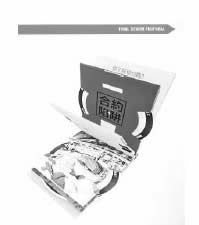
Figure 13. Grace Tsai’s thesis project, Project Helpmate (Tsai, 2009, 79).
Object Lession B: Upstreaming and Regional Production
More recently, Siramol Muan On-Sri’s capstone project, KRAHM: For Thai, in Thai, by Thai (2013), coupled footcare –reducing athlete’s foot in a moist climate– with the economic health of the Thai shoe industry. As evidenced in her network diagram, process tree, and life cycle analysis (See Figure 14 at page 226), her examination of the Chain of Influences sharpened consideration of materials, assembly, packaging and distribution, and revealed opportunities to rejuvenate and promote a hand-skilled industry imperiled by neighboring China’s industrial prowess.
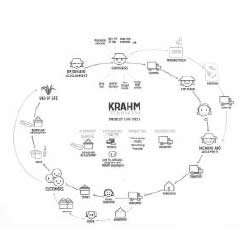
Figure 14. The Chain of Influences expressed through Siramol Muan On-Sri’s life cycle diagram (On-Sri, 2013), promoting healthier shoes and a healthier Thai shoe industry. Produced in Capstone section taught by Len Mayer and R. Kirkbride, with prototyping support from P.J. Carlino.
Object Lesson: Upstreaming and Global Production
To emphasize the global impacts of artifacts and systems we design, I’ve devised other object lessons. For example: If Emerald Ash Borers (EAB) consume Ash trees, why are Maple baseball bats shattering catastrophically, injuring fans, players and umpires? To better understand this problem, look upstream. Entomologists trace the EAB to coastal cities in China, where it is contained by natural predators, including non-stinging wasps. Among these cities, the shipping pallet-making industry had been family-run and lightly regulated, resulting in a shipment of wooden pallets, infested with EAB, arriving in Michigan in the early 1990’s (USDA map, 2014). As there are no natural predators for EAB in North America, uncontained spread of the EAB will potentially eradicate the 8 billion Ash in the United States. The repercussions are enormous. As one example, over the past century Ash has been the material of choice for professional baseball bats. The spread of EAB jeopardizes the wellbeing of Louisville Slugger, the industry-leader in bat production, as well as its supply chain of smaller family-owned mills (Davey, 2007). Due to the combined effects of user trends and EAB devastation, athletes and bat makers are shifting to Hard Maple, whose grain is not as straight as Ash trees. This is a primary source of the catastrophic shattering (Hernandez, 2009). Since Hard Maple bats are produced in the Northern United States and Canada, where shorter growing seasons due to climate change have historically produced harder wood, it is also possible that extended growing seasons contribute to faster-growing Maple trees, and lower-density baseball bats. Although the U.S. National Park Service has helped manufacturers remediate catastrophic shattering significantly (US Forest Service website, 2013), challenges to the product chain for the baseball bat industry, Ash or Maple, present a poignant opportunity for further material research and design innovation.
There is, however, a much greater concern regarding the disappearance of the Ash trees from North America, which returns us to the heart of this paper. Ash grow particularly well in riparian conditions, and protect stream and riverbanks against erosion. Their disappearance will only increase the fragility of our watersheds. The broader “learning moment” here is the recognition of an increasingly complex interplay of natural and cultural forces, and an opportunity to transform the poetics of human material production and intangible behaviors. Upstreaming enables us to imagine future conditions by retracing influences to their sources. By pitching in to communities upstream –in our watersheds, foodsheds, product supply chains, as well as in our learning environments– we improve the well-being of residents “above” us, integrating local, civic, and regional governance, thereby improving our own lot.
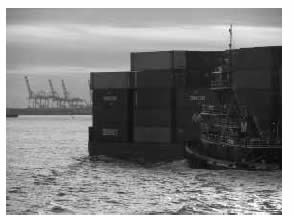
Figure 15. Global product flows: Container ship in New York City harbor. Photo by R. Kirkbride.
Referentes
1. Bennie, F., Koerselmann, A., & Sherwin, C. (2008). NGO Meets Design: Future Cases From Upstreaming Sustainable Innovation (Abstract). Sustainable Innovation 08: Future Products, Technologies and Industries. Malmö, Sweden. Retrieved from http://www.cfsd.org.uk/conferences/tspd13/tspd13_abstracts.html [ Links ]
2. Burns, C., Cottam, H., Vanstone, C., & Winhall, J. (2006). Transformation Design: Red Paper 02. Design Council Website. Retrieved from http://www.designcouncil.info/mt/RED/transformationdesign/TransformationDesignFinalDraft.pdf [ Links ]
3. Davey, M. (2007, July 11). Balmy Weather May Bench a Baseball Staple. The New York Times. Retrieved from http://www.nytimes.com [ Links ]
4. Elefant, C. (2010). Written testimony of Carolyn Elefant… on HB 1817: An Act Authorizing the Commonwealth of Pennsylvania to join the Mid-Atlantic Area Natural Gas Corridor Compact. Presented before the House Consumer Affairs Committee of Pennsylvania. Retrieved from the website of the Pennsylvania General Assembly: http://www.legis.state.pa.us/cfdocs/legis/TR/transcripts/2010_0139_0008_TSTMNY.pdf
5. Ho, C. L. (2007). On Track. Mark Magazine, Vol. 6. pp. 174-181. [ Links ]
6. Intersections: Population Slam (Parsons website). (2010). Retrieved from http://www.newschool.edu/parsons/pastexhibitions1011.aspx/pastExhibitions1011.aspx?id=57452 [ Links ]
7. Kirkbride, R. (2013). Veils and Velocities. Cuaderno 48: Centro de Estudios en Diseño y Comunicación. Edited by Marisa Cuervo, Marcia Veneziani and Steven Faerm. Buenos Aires: University of Palermo University Press. pp. 177-90. [ Links ]
8. Kirkbride, R. (2009). On Water and Development. 2009. WATER: Alphabet City Vol. 14. Edited by John Knechtel. Cambridge, MA: The MIT Press. pp. 114-23. [ Links ]
9. Kirkbride, R. (2008). Proposals for A Good Life: Senior Thesis Projects from Parsons Product Design 2003-08. Conference proceedings for Changing the Change. Turin, Italy: Umberto Allemandi. ISBN 88-422-1670.4 [ Links ]
10. Little Houses on the Black River project blog. (2006). Retrieved from http://bridgefriggebod.blogspot.com/ [ Links ]
11. Living Concrete Blogsite for Watertables: Upstream/Downstream. (2010). Retrieved from http://livingconcrete.wordpress.com/2010/11/19/watertables-2010-dinner-at-theexhibition/ [ Links ]
12. On-Sri, Siramol Muan. (2013). KRAHM: For Thai, in Thai, by Thai. (Unpublished BFA Product Design capstone project). Parsons The New School for Design, New York, NY. [ Links ]
13. Parsons Design Workshop. (2007). Parsons Unveils Latest Design Workshop Project. Retrieved from http://www.newschool.edu/pressroom/pressreleases/2007/20070918_ parsons_margaretville.html [ Links ]
14. Trialonas, S. P. (2011). Transcontinental Gas Pipeline Co. v. A Permanent Easements for .018 Acres. The Agricultural Law Resource and Reference Center. Pennsylvania State University. Retrieved from http://law.psu.edu/_file/aglaw/Marcellus_Shale/Transcontinental_case_summary.pdf [ Links ]
15. Tsai, Grace. (2009). Contract Helpmate. (Unpublished BFA Product Design thesis project). Parsons The New School for Design, New York, NY. [ Links ]
16. United States Department of Agriculture Forest Service. Biological Control of the Emerald Ash Borer. Retrieved March 7, 2014 from http://www.nrs.fs.fed.us/disturbance/invasive_species/eab/control_management/biological_control/ [ Links ]
17. United States Department of Agriculture Forest Service. Multinational Emerald Ash Borer website. Retrieved March 7, 2014 from http://www.emeraldashborer.info/#sthash.k5UsMMZ9.dpbs [ Links ]
18. United States Department of Agriculture Forest Service. Emerald Ash Borer map. Retrieved March 7, 2014 from http://www.emeraldashborer.info/map.cfm#sthash.6C9HAC3n.dpbs [ Links ]
19. United States Forest Service. (2013, July 12). Rate of shattered baseball bats 50 percent less, thanks to Major League Baseball, Forest Service. Retrieved from http://www.fs.fed.us/news/2013/releases/07/shatteredbats.shtml [ Links ]
20. Victory Brewing Company website. (2014). Victory for the Environment. Retrieved March 8, 2014 from http://www.victorybeer.com/about/victory-for-the-environment/ [ Links ]
21. Hernandez, Roland. (2009, January). Review of 2009 MLB Baseball Bat Regulations. Retrieved from http://www.woodbat.org/ [ Links ]
22. Wurman, R. S. (1986). What Will Be Has Always Been: The Words of Louis I. Kahn. New York, NY: Rizzoli International Publications, Inc. [ Links ]
23. Wynn, J. (2013, December 8). Upstreaming sustainability. Carbon Blog. Retrieved from http://carbonbusiness.com.au/blog/upstreaming-sustainability-enter-social-media/ [ Links ]














